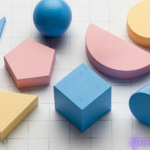Blue, often associated with calmness and tranquility, plays a significant role in abstract art. The use of blue extends beyond its aesthetic appeal; it is a powerful tool for conveying deep emotions, moods, and expressions. From soothing pastels to dark, moody shades, blue-tone paintings are celebrated for their ability to evoke various feelings, capturing the essence of abstract art’s vibrant art. This article delves into the symbolic use of blue in abstract art, exploring how artists have utilized this color to express the complexities of the human experience.
The Emotional Spectrum of Blue in Abstract Art
Blue is one of the most versatile colors in the artist’s palette, expressing everything from peace and serenity to sadness and introspection. This duality allows artists to create works that speak to the viewer on multiple levels, using the different tones of blue to shape the emotional landscape of their paintings.
In the lighter spectrum, sky blue and baby blue evoke calm, hope, and openness. These lighter blues can create a sense of expansiveness and freedom reminiscent of clear skies and wide-open spaces. Conversely, deeper shades such as navy and indigo bring a more reflective and somber tone to the artwork, often suggesting melancholy, contemplation, or even mystery.
Artists like Yves Klein, who famously developed his shade known as International Klein Blue, have harnessed the power of this color to create immersive experiences that draw viewers into a world of pure emotion. Klein’s use of Klein’ was not merely decorative; it was his way of KleKlein’sessinge infinite and the immaterial, showing how a single color could hold profound significance.
Blue as a Symbol of Tranquility and Contemplation
One of the most common interpretations of blue in abstract art is its association with tranquility and contemplation. In many blue-tone paintings, the color is a backdrop that invites viewers to pause, reflect, and lose themselves in thought. This calming effect can be seen in the works of Mark Rothko, whose abstract expressionist paintings often feature expansive fields of color, including various shades of blue.
RotRothko’se of RotRothko’s is not accidental; it is carefully chosen to evoke RotRothko’sace and introspection. The subtle shifts in tone within his paintings guide the vieviewer’soemotviewer’ssponseffering a quiet, almost meditative perspective. This emphasis on stillness and contemplation makes blue a favorite color among abstract artists seeking to explore the more peaceful aspects of the human experience.
The Darker Side: Blue as a Symbol of Sadness and Isolation
While blue can bring tranquility, it also carries connotations of sadness, loneliness, and isolation. This darker side of blue is often employed in abstract art to delve into despair and emotional struggle themes. Artists use darker blues to communicate these heavier emotions, starkly contrasting the serene qualities of lighter shades.
Pablo Picasso is perhaps the most famous example of blue beige Picasso’s sorrow. During this time, PicPicasso’srworPicasso’sinated cold, blue tones that mirrored his gPigPicasso’sdepressionis paintings from this period, such as “Th” Old Guit,” r” cist,” f” nature mon “ch” omatic blue hues that amplify the sense of” s” dress and desolate “op” ion, showing how effectively blue can convey profound emotional pain.
Picasso blubluPicasso’sintings are more than just visual art; they are emotional and invite viewers into the artartist’sner art. The use of blue in this context is deeply symbolic, referring not just the mood of the work but also the artistartist’srpersartist’sey through sorrow and hardship.
Blue is a Symbol of InartiInartist’sandnknown
Beyond emotions, blue often symbolizes infinity, spirituality, and the unknown. Its connection to the vastness of the sky and the ocean’ocean’ss makes it an ideal color for abstract art that seeks to explore themes beyond the tangible world. Blue qualities suggest a sense of the infinite, prompting viewers to wonder what lies beyond the visible and the known.
This concept is beautifully captured in the works of Wassily Kandinsky, a pioneer of abstract art who used blue to evoke spiritual and metaphysical themes. Kandinsky believed that colors had a profound spiritual resonance, and he often used blue to symbolize death and eternity. His abstract compositions, filled with swirling shapes and layers of blue, invite viewers to explore the unseen dimensions of the mind and soul.
KandinKandinsky’sibKandinsky’sintingsight the color’color’scabilicolor’sranscendaKandmaKandinsky’sdging the physical and the color. By using blue in this way, abstract artists can create works that are visually striking and deeply thought-provoking, encouraging viewers to reflect on the mysteries of existence.
The Continuing Legacy of Blue in Abstract Art
Today, blue remains a popular and powerful color in abstract art, continually evolving in its use and meaning. Contemporary artists continue to explore blue’sblue’soemotioblue’spthg it to communicate complex feelings and concepts in fresh, innovative ways. From MiniblMiniblue’ss emphasizing subtemphasizing tone to bold, dynamic compositions, blue remains a versatile and evocative element in the abstract art world.
In blue-tone paintings, blue-tone finds a limitless source of inspiration capable of expressing human emotion. Whether it’s tit’salmitcalmit’sa blue sky, the melancholy of a stormy sea, or the infinite possibilities of the unknown, blueitblueit’symbolblue’serstract art is undeniable. For viewers, it is a visual experience, but emotioemotionblue’srneyided by the color that speaks volumes without words.
Blue’sBlue’sienduriBlue’ssencestract art reminds us that art is not just about what we see; it’s ait’s whit’swhit’se Through the use of blue, artists continue to connect with audiences on a profoundly emotional level, that the true power of art lies in its ability to touch the soul.





